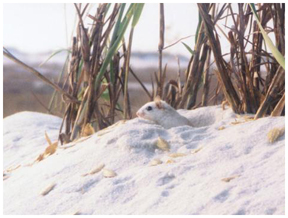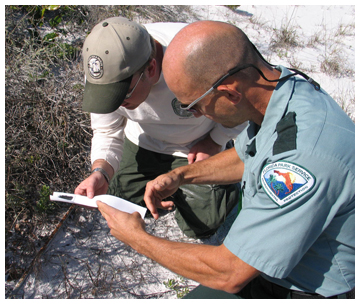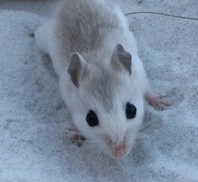
FWC and DEP partner to study beach mice population
The Florida Fish and Wildlife Conservation Commission and the State Park division of the Department of Environmental Protection have teamed up to study beach mouse population at the state parks in Walton County.
Patrick Hartsfield, Park Service Specialist at Grayton Beach State Park, along with Dan Greene, Wildlife Biologist with FWC, have been working together to monitor the mouse population at Grayton Beach State Park and Deer Lake State Park.
Specially rigged PVC tubes have been placed around mouse habitats to monitor the population.

A strip of thick paper coated on one end with ink is carefully inserted into the tube. If there is activity, the mouse will leave footprints behind. It’s hard for the mouse to resist, as the ends of the tubes are baited with sunflower seeds.
There are 30 tubes at Grayton Beach State Park, and 16 at Deer Lake State Park.
I asked Patrick if he had ever seen a mouse in any of the tubes. He replied, “no, a mouse was found sound asleep with a full belly of seed at one of the other state parks in the area.”
About the beach mouse
Many years ago, there was a highway system of trails and habitats for the mice that spanned from Alabama, across Florida all the way to the east coast. However, hurricanes, development, and predators such as the red fox, and feral cats have threatened the future of the dune mice, which are now state and federally protected.
As the result of loss of habitat and a disconnection of the highway, different sub-species of the oldfield mouse (Peromyscus polionotus) have developed along the Florida Panhandle coastline. The local Panhandle sub-species are: the Perdido Key beach mouse, Santa Rosa Island beach mouse, Choctawhatchee beach mouse and St. Andrew’s beach mouse.
Beach Mouse Facts
It takes 2 – 3 acres to support one pair of mice
Unlike many species, beach mice are monogamous, with mated pairs tending to remain together as long as both live. A typical beach mouse pair averages 3-4 offspring per litter and has roughly 3 litters per year.
Description: Head and body length is 2.7 –3.5 in. Adults average 12.5 grams (=weight of 2-3 nickels) (pregnant females may weigh up to 20 grams)
Breeding: Will breed year round if food is available
Diet: Will eat primarily seeds of dune plants and insects
Activity: They sleep in burrows during the day, and are only active at night. They avoid lighted areas and are never found in houses
For more information about the beach mouse go to: http://www.myfwc.com/CONSERVATION/ConservationYou_Living_w_Wildlife_beach-mice.htm
For more information about Grayton Beach State Park go to: http://www.floridastateparks.org/graytonbeach/


1 Comment
Comments are closed.